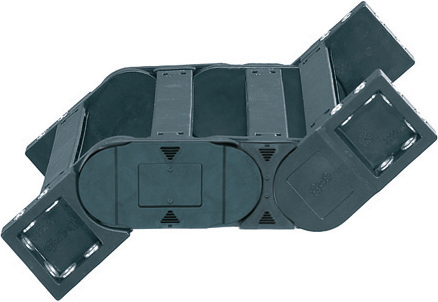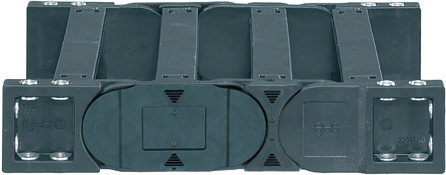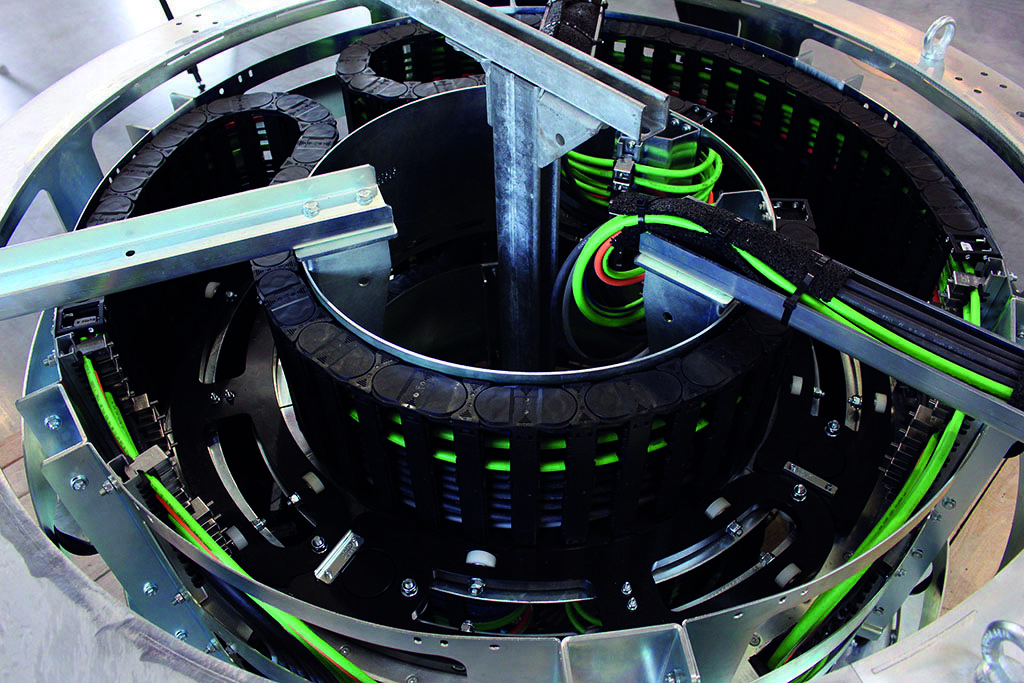Selecting the correct mounting bracket
mkogelmann | 7. April 2020
Almost all mounting brackets are available in two variants. The first pivots, the second is fixed.
At this point, many design engineers wonder when they should use the pivoting and when the fixed version.


Pivoting mounting brackets are standard for gliding or horizontally unsupported applications
But why is that? The pivoting mounting bracket compensates for the sag resulting from the energy chain’s pretension. This makes it easy to install, and no other moments or forces are transmitted through the mounting bracket to the energy chain.
If the mounting bracket is not mounted exactly at radius height, the pivoting mounting bracket can compensate for smaller height differences.

The special case of horizontal unsupported with travelling lower run
This special case imposes special requirements on the energy chain. The mechanical loads are a bit greater. There are several things to pay attention to during connection (and during selection of mounting brackets). Can I support the mounting bracket and part of the energy chain in the outer radius? If so, I can safely plan for a pivoting element. Otherwise, I need a fixed version; the e-chain would break away directly at the mounting bracket.


Vertical standing installation positions
Pivoting mounting brackets can also be used in vertical standing installation positions. If they are, however, the energy chain must be supported on its outer radius. If such supports cannot be provided, fixed elements must be used here as well.

Vertical hanging installation applications

Vertical hanging installation applications can almost always be planned with pivoting elements. If acceleration in the installation direction causes further forces and moments, the energy chain will swing back and forth. Support on the outer radius or use of fixed mounting brackets can prevent this swinging.
Rotary movement
Rotary and winding movements are usually eliminated at the moving end with pivoting mounting brackets. And at the fixed end, although the installation type and orientation must be considered there.


